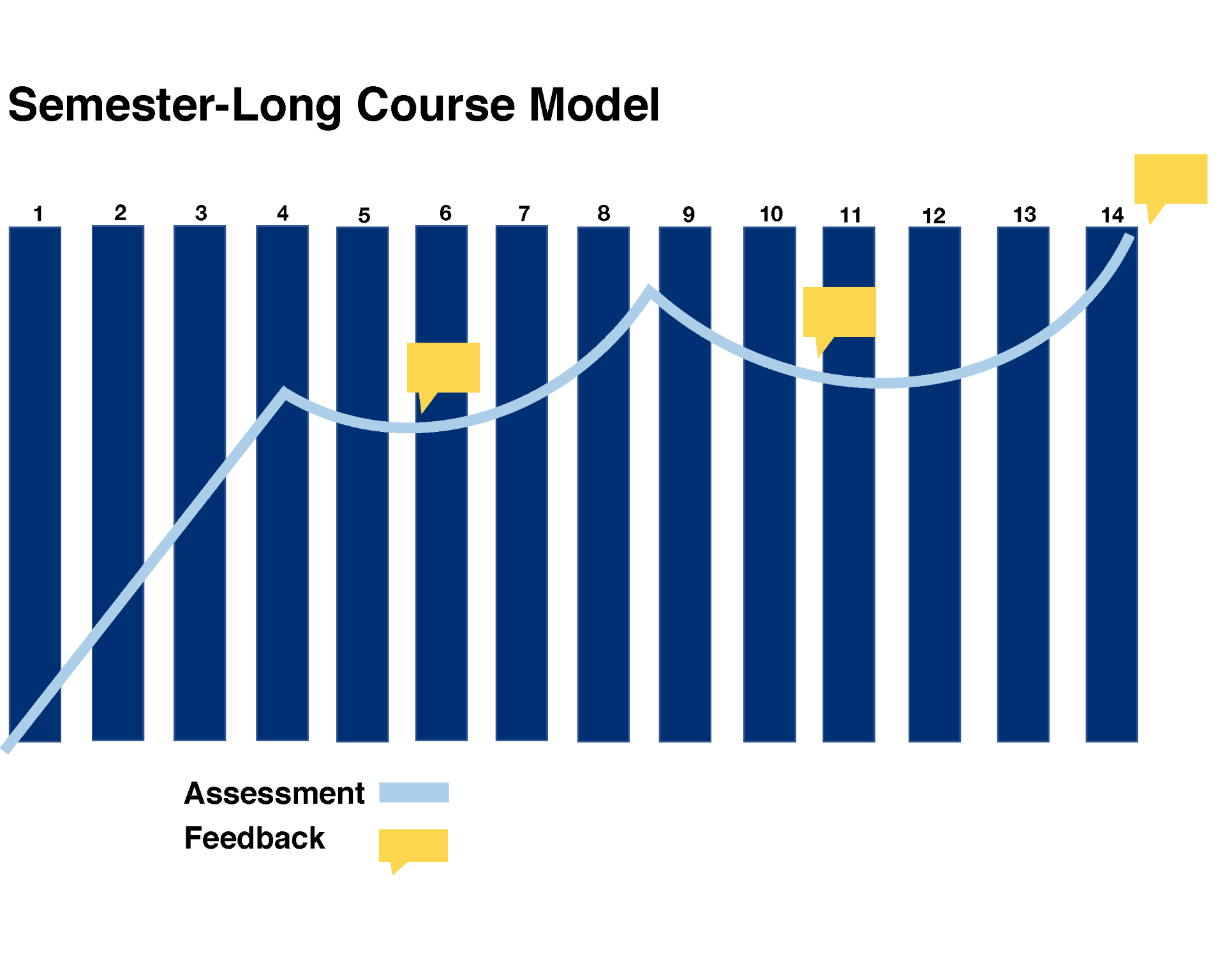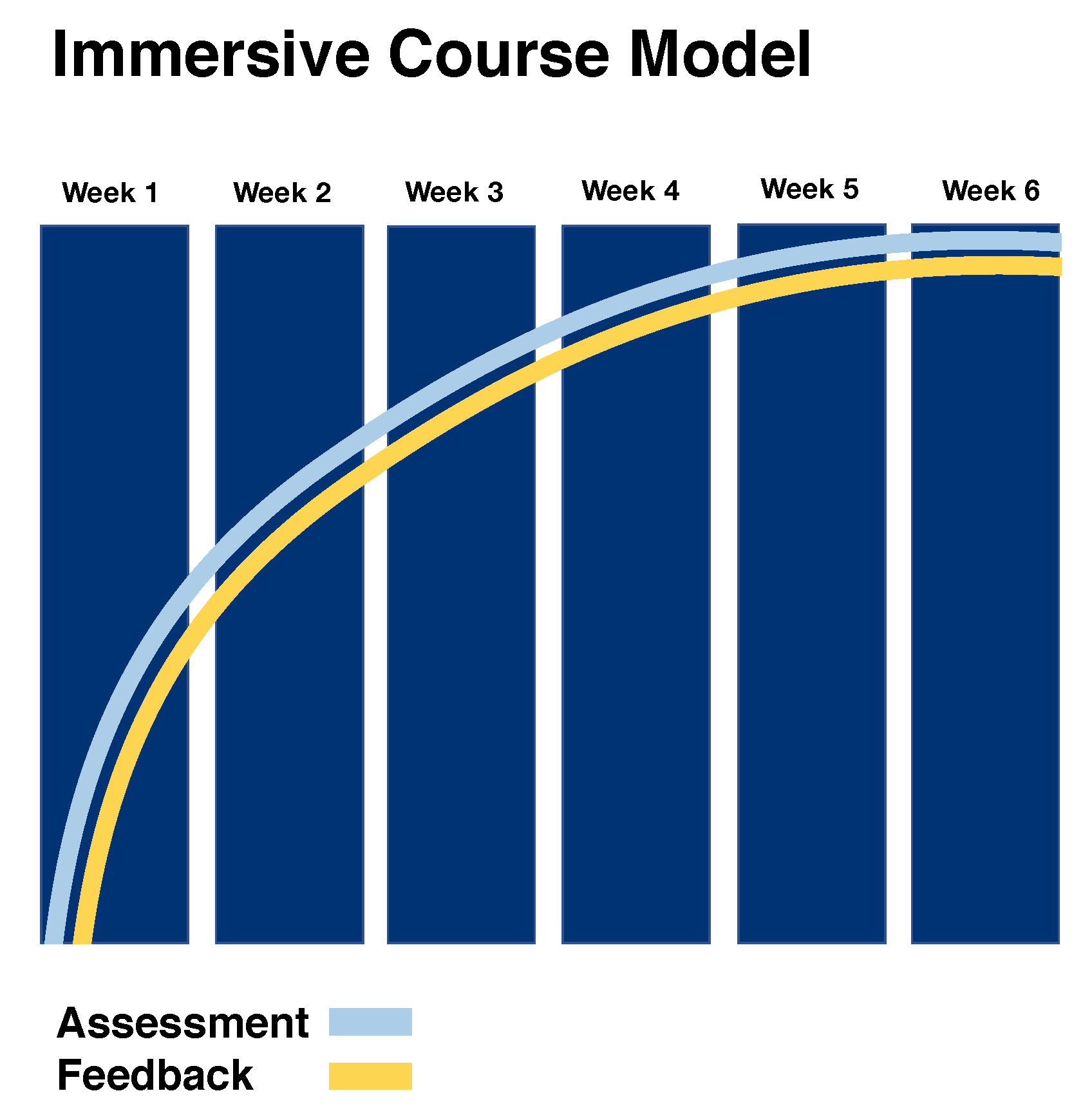Seven Strategies for Success in Six-Week Immersive Courses
Immersive courses are designed to allow instructors and students to work intensively together for a shorter period than a typical semester in order to enhance focus and facilitate learning through real-world application. Whether the course involves collaborative projects, field work, case studies, problem solving, and/or inquiry-based learning, the goal of immersive courses is to go deep into the disciplinary realm of practice and to allow the students to work and learn closely together in community. In that spirit, this resource distills the seven most impactful strategies to employ when designing an immersive course.

Some of these recommendations may seem familiar to you, because these are tips for effective teaching in general. However, when you are teaching an immersive course—especially an immersive course in an online or hybrid format—the need for intentional planning and thoughtful implementation is greatly amplified.
Cite this resource: Columbia Center for Teaching and Learning (2020). Seven Strategies for Success in Six-Week Immersive Courses. Columbia University. Retrieved [today’s date] from https://ctl.columbia.edu/resources-and-technology/teaching-with-technology/teaching-online/immersive-courses/
1. Distill Learning Goals
Be realistic about what can be achieved in six weeks. Consider the skills students will need to develop to apply their content knowledge to authentic, relevant problems or big questions in the discipline. Consider reviewing your learning goals for the course before you (re)design other elements of the course.
2. Build Community
Make community building and/or teamwork skills a course goal. Consider how you will ensure your course is inclusive and accessible, and how you will build community from the very beginning. You might consider pre-class surveys, online welcome videos, icebreakers, Q+A Discussion Forums, or other ways of building community. See the AAC&U Teamwork rubric for ideas on how to measure teamwork within your course. Lastly, consider including opportunities to check in with your students throughout the six weeks, as a way to get feedback on how the course is going and how students are doing.
3. Reduce Content
Only include content that is necessary for students to achieve your learning goals. Any extra content can be made optional, or students can choose from among a larger selection of readings, videos, and other resources. As you’re designing the course, keep saying to yourself: Depth not breadth!
4. Scaffold Assignments to Help Students Stay on Task
Expectations and assignments should be discussed and clarified in the first week of class to give students enough time to finish them in five weeks. The work on end-of-course projects or papers should be scaffolded into smaller assignments due each week. Engage students in learning reflection (metacognition): answering questions about how to improve their own learning, self-assessment and grading using rubrics, and working with peer partners to get support and feedback.
5. Provide Opportunities for Feedback and Formative Assessment
Feedback opportunities should begin no later than week two and should consist of frequent, low-stakes quizzes, reflection paper synopses of readings, etc. so that students know right away what they need to do to succeed. Utilize rubrics and peer feedback to keep yourself from being overwhelmed.
In a typical fourteen-week semester, assignments and assessments will often ramp up around week three or four, with feedback starting to come in a week or two later. The next major assessment might be assigned around week eight or nine, with feedback coming in before students turn in their final assignment or take their final exam. While early and often feedback is always ideal for maximizing student learning, this model still gives students time to learn from the feedback and apply it to their next assignment or exam.
In a six-week immersive course, feedback tracks assessment and begins immediately. The major assessments and assignments of the course are introduced in week one, and students will need feedback almost immediately to ensure they can apply it in their final drafts or in their next assignments.
6. Plan Every Class

Divide each week into what the students will do before-class, during-class, and after-class. Plan your activities as the instructor accordingly. It can be helpful to envision each of the six weeks as a different module, and align that modularity with your CourseWorks site design. You may even consider providing students with a module roadmap to help guide them through the six weeks.
Access accessible PDF of image.
7. Vary the In-Class Activities
Successful immersive weeks incorporate a variety of in-class activities to promote active learning, including guest speakers, polls, break-out rooms, collaborative work, chats monitored by TAs, short video clips, debates, discussions, case-based learning, textual analysis, peer review and peer feedback, presentations, simulations, role-playing scenarios, struggling with a hard problem, and more. All of these activities can be interspersed with your short (10-15 minute) explanations and lectures, or can follow recorded lectures the students view before coming to class.
Teaching Online
Planning for Fall 2020? CTL has created online resources and workshops to help instructors adapt to teaching online and best prepare for the upcoming semester.

